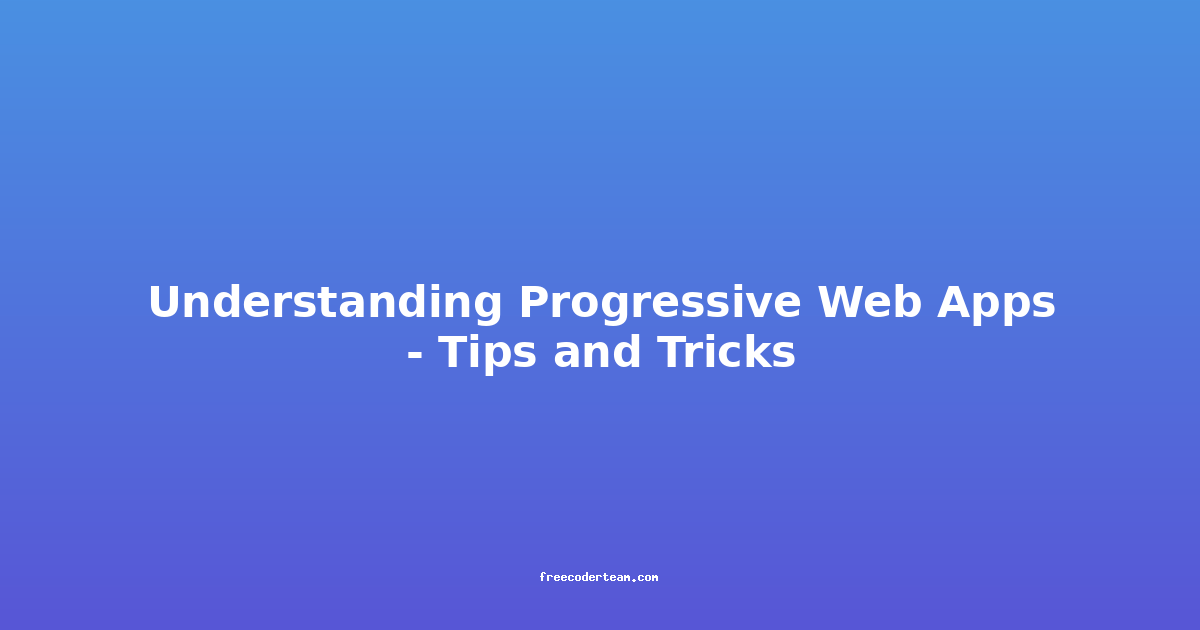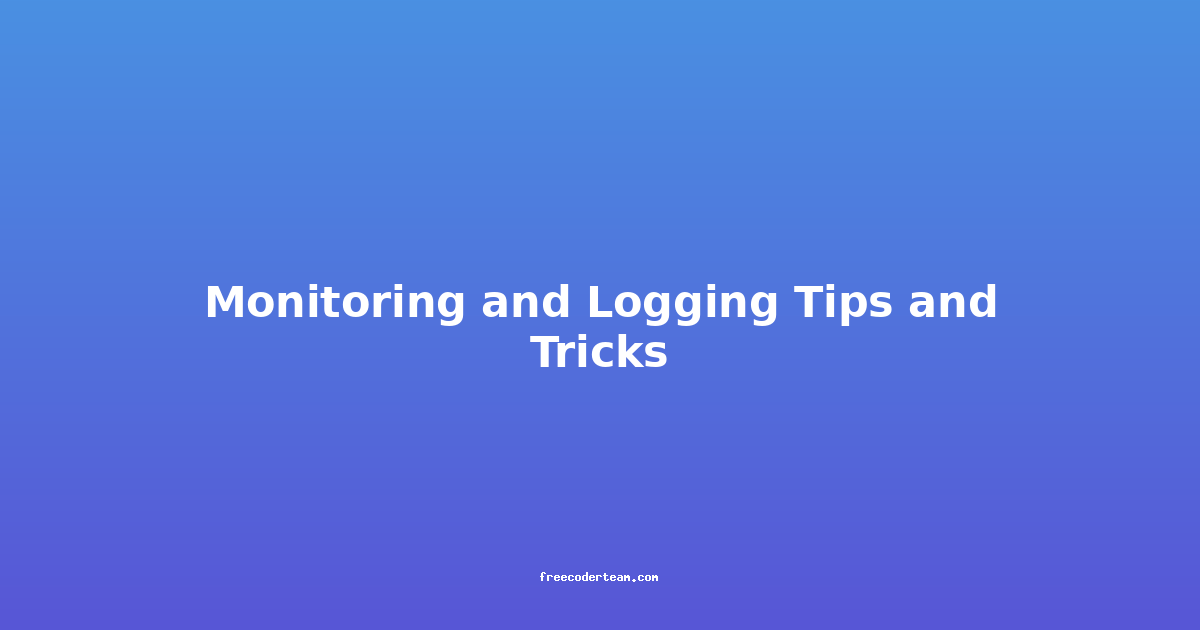Understanding Progressive Web Apps (PWAs): Tips and Tricks
Progressive Web Apps (PWAs) have emerged as a powerful way to deliver fast, reliable, and engaging web experiences. They combine the best aspects of web and mobile apps, offering a seamless user experience across devices. PWAs are designed to be fast, reliable, and engaging, making them a popular choice for businesses looking to reach a broader audience without the hassle of maintaining separate mobile apps.
In this comprehensive guide, we’ll dive deep into understanding PWAs, their benefits, and actionable tips to help you build and optimize them effectively.
What Are Progressive Web Apps (PWAs)?
Progressive Web Apps are web-based applications that offer the functionality and user experience of traditional native mobile apps. They are built using standard web technologies such as HTML, CSS, and JavaScript, but they are enhanced with modern web capabilities like service workers, manifests, and push notifications.
Key Characteristics of PWAs:
- Progressive: Works on any browser, even in older versions, without requiring any installation.
- Responsive: Adapts to any screen size and orientation.
- Reliable: Loads quickly and works offline or in poor network conditions.
- Fast: Uses caching and preloading to deliver near-instant loading times.
- Engaging: Offers a native app-like experience with features like push notifications and home screen icons.
Why Build a PWA?
PWAs offer several advantages over traditional web and mobile apps:
- Unified Experience: A single codebase works across all devices, reducing maintenance costs.
- Cost-Effective: No need for separate app stores or app development teams.
- SEO-Friendly: PWAs are indexed by search engines, boosting organic traffic.
- Offline Functionality: Service workers enable offline access, enhancing user engagement.
- Fast Loading: Pre-caching and lazy loading ensure quick loading times, even on slow networks.
- User Adoption: PWAs can be added to the home screen, making them easily accessible.
How to Build a PWA
Building a PWA involves several key components. Let’s break it down step by step.
1. Manifest File
A manifest.json file provides metadata about your app, including its title, icons, and theme colors. Browsers use this file to display your app as a standalone app on the user's device.
Example Manifest File:
{
"short_name": "MyPWA",
"name": "My Progressive Web App",
"icons": [
{
"src": "/images/logo-192x192.png",
"sizes": "192x192",
"type": "image/png"
},
{
"src": "/images/logo-512x512.png",
"sizes": "512x512",
"type": "image/png"
}
],
"start_url": "/",
"display": "standalone",
"background_color": "#ffffff",
"theme_color": "#000000"
}
short_name: Shown on the home screen.icons: Define app icons for different sizes.start_url: The URL to load when the app is opened.display: Controls how the app appears (e.g.,standalonemakes it look like a native app).theme_color: Sets the theme color for the app.
2. Service Workers
Service Workers are JavaScript files that run in the background, enabling features like offline caching, push notifications, and background synchronization.
Example Service Worker:
// sw.js
const cacheName = 'my-pwa-cache-v1';
const filesToCache = [
'/',
'/index.html',
'/styles.css',
'/script.js',
'/images/logo.png'
];
// Install the service worker and cache static assets
self.addEventListener('install', (event) => {
event.waitUntil(
caches.open(cacheName).then((cache) => {
return cache.addAll(filesToCache);
})
);
});
// Fetch resources from cache or network
self.addEventListener('fetch', (event) => {
event.respondWith(
caches.match(event.request).then((cachedResponse) => {
return cachedResponse || fetch(event.request);
})
);
});
Key Points:
- Caching: Store static assets in the cache for faster loading.
- Fallback: If the network is unavailable, serve content from the cache.
- Update Strategy: Use versioning in the cache name to handle updates.
3. Add to Home Screen
PWAs can be added to the home screen of a device, making them look and feel like native apps. Modern browsers like Chrome and Firefox automatically prompt users to add the app to their home screen if the site meets certain criteria (e.g., service worker, manifest file, and user engagement).
Example Prompt for Adding to Home Screen:
if ('standalone' in window.navigator) {
document.getElementById('add-to-home').addEventListener('click', () => {
window.navigator.standalone = true;
});
}
Best Practices for Building PWAs
1. Optimize Performance
- Lazy Loading: Load images and scripts only when they are needed.
- Minify Assets: Compress HTML, CSS, and JavaScript to reduce file sizes.
- Use WebP Images: WebP images are smaller and load faster than JPEGs or PNGs.
2. Ensure Offline Functionality
- Cache Important Resources: Include essential assets in the service worker cache.
- Use Cache-Fallback Strategy: Fall back to cached content when the network is unavailable.
3. Responsive Design
- Flexible Layouts: Use CSS media queries and flexible grids.
- Touch Optimization: Ensure interactive elements are large enough for touchscreens.
4. Lighthouse Audits
- Regular Audits: Use tools like Google Lighthouse to check performance, SEO, and accessibility.
- Target Core Web Vitals: Optimize for metrics like Largest Contentful Paint (LCP), First Input Delay (FID), and Cumulative Layout Shift (CLS).
5. Push Notifications
- User-Consented Notifications: Respect user preferences and only send relevant notifications.
- Background Sync: Use service workers to sync data in the background.
Tools and Resources for PWAs
- Lighthouse: Chrome’s performance auditing tool.
- Workbox: Google’s library for creating service workers.
- PWA Builder: A free tool for generating PWA manifests.
- Webpack and Babel: For bundling and transpiling JavaScript.
Case Studies: Successful PWAs
- Flipkart Lite: An e-commerce PWA that loads 4x faster than the native app.
- Twitter Lite: Twitter’s PWA that provides a native-like experience without installation.
- The Weather PWA: A simple weather app that works offline and loads instantly.
Conclusion
Progressive Web Apps are transforming the way web applications are built and delivered. By leveraging modern web technologies like service workers and manifests, PWAs offer a unified, fast, and engaging experience across devices. Whether you’re building a new app or enhancing an existing one, PWAs are a powerful tool for reaching a broader audience and improving user satisfaction.
Key Takeaways:
- Manifest File: Define app metadata for a native-like experience.
- Service Workers: Enable offline functionality and caching.
- Performance Optimization: Use lazy loading, minification, and WebP images.
- User Experience: Prioritize speed, responsiveness, and offline capabilities.
By following best practices and utilizing the right tools, you can build PWAs that deliver exceptional value to your users.
Resources and Further Reading
By embracing PWAs, you can provide users with a seamless, fast, and engaging experience that bridges the gap between web and native apps. Start building your PWA today and unlock the full potential of modern web development! 🚀
Note: Always ensure compliance with privacy laws and respect user data when implementing features like push notifications and background syncing.
End of Blog Post




